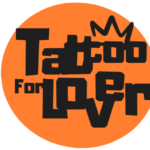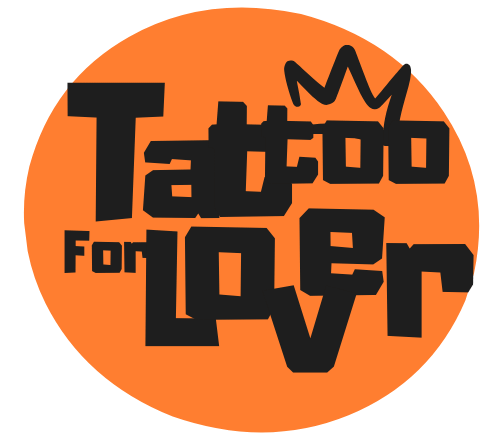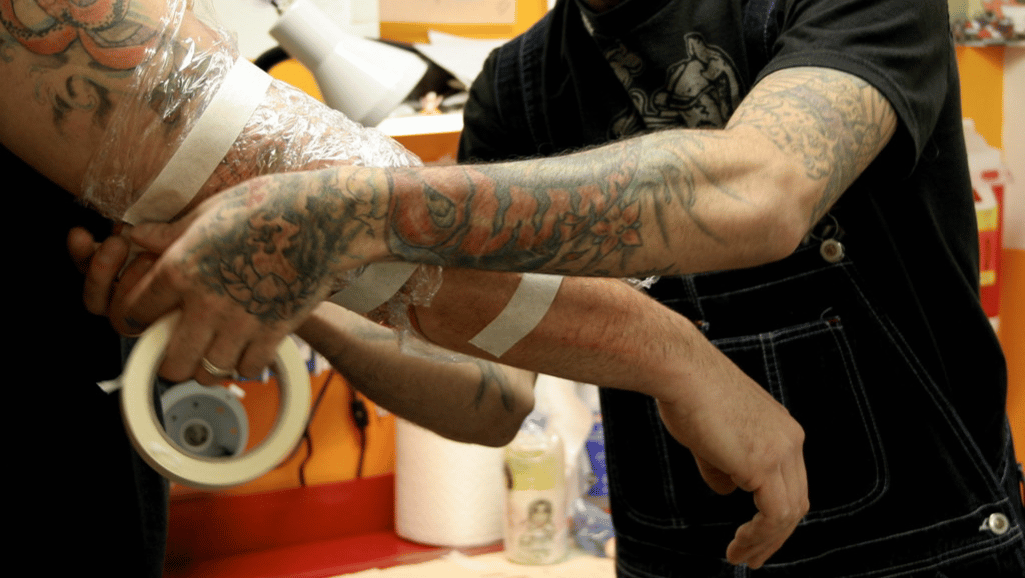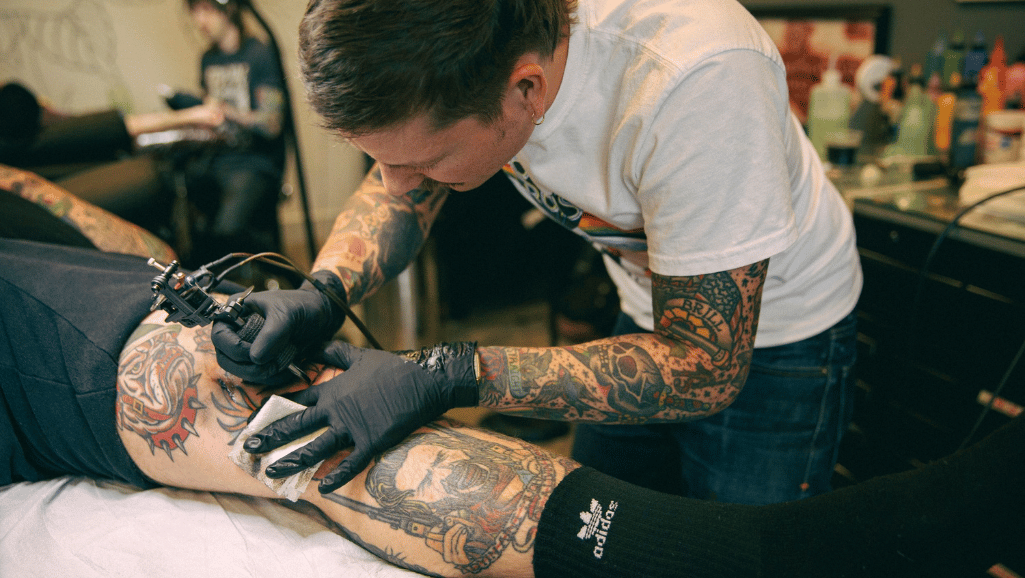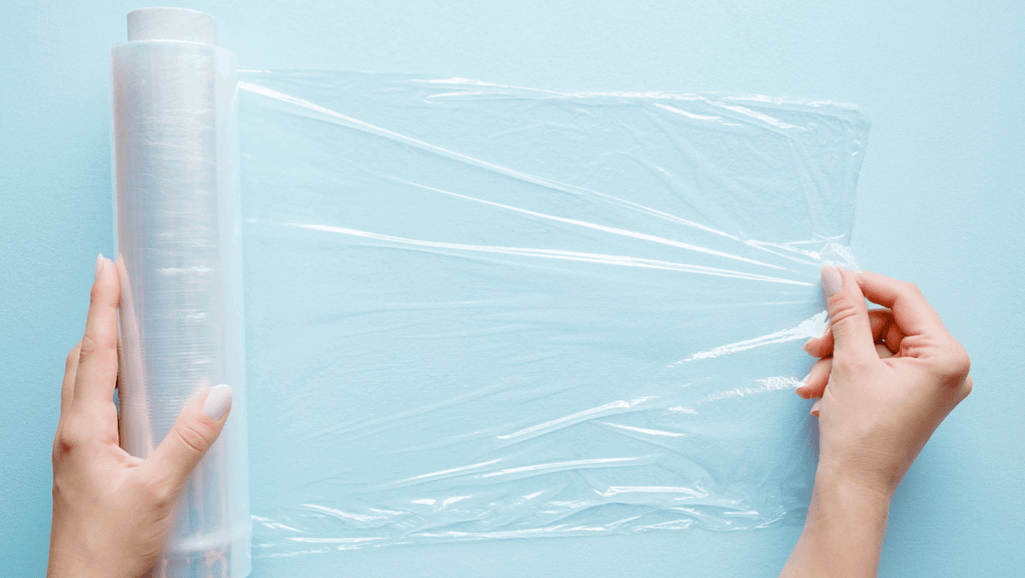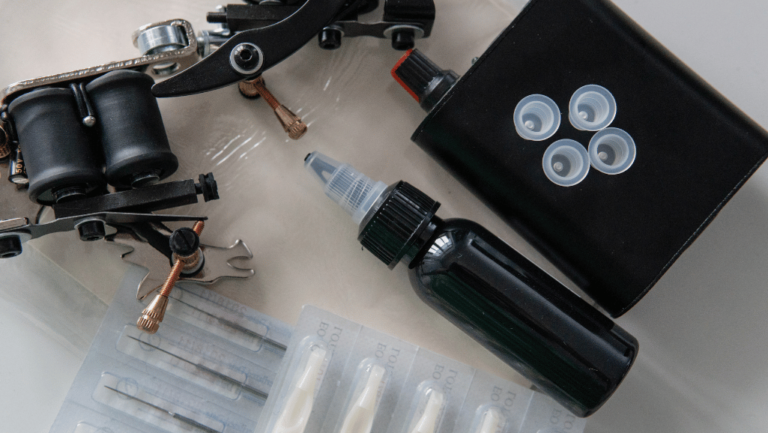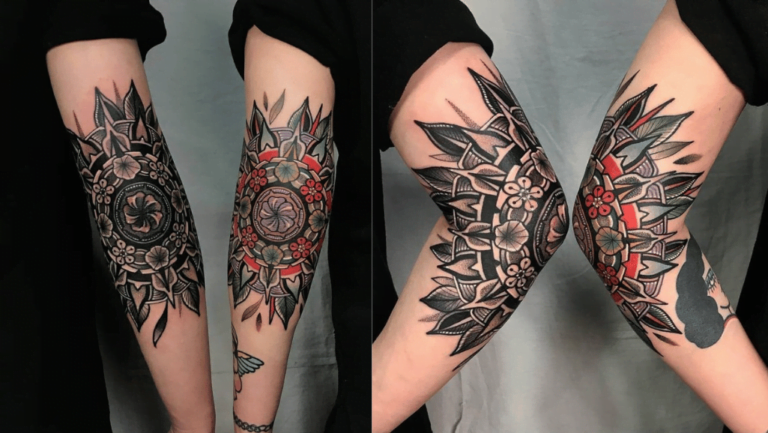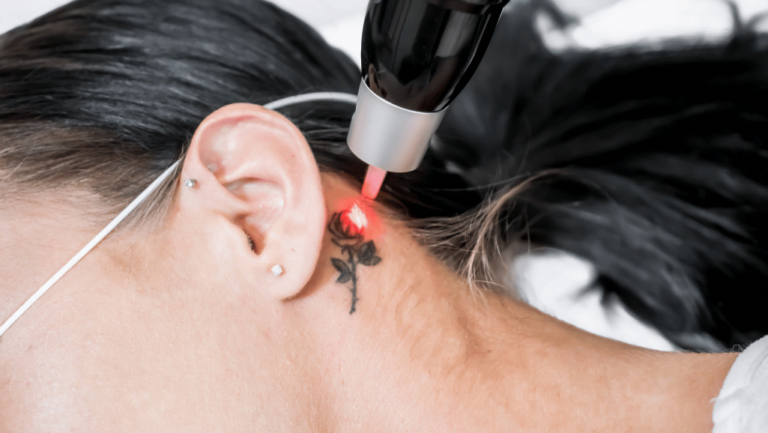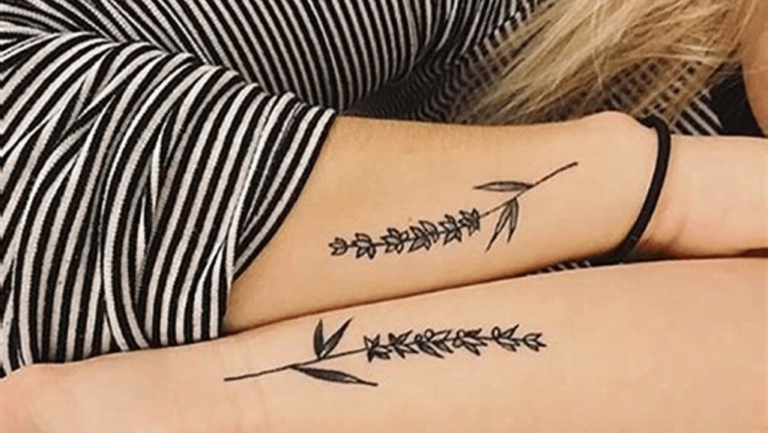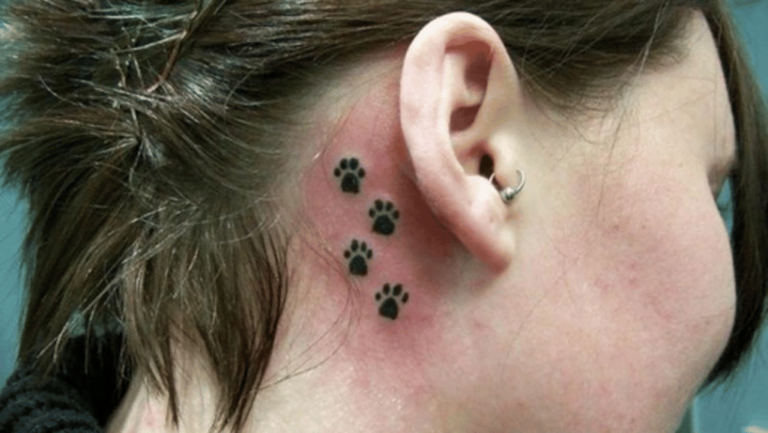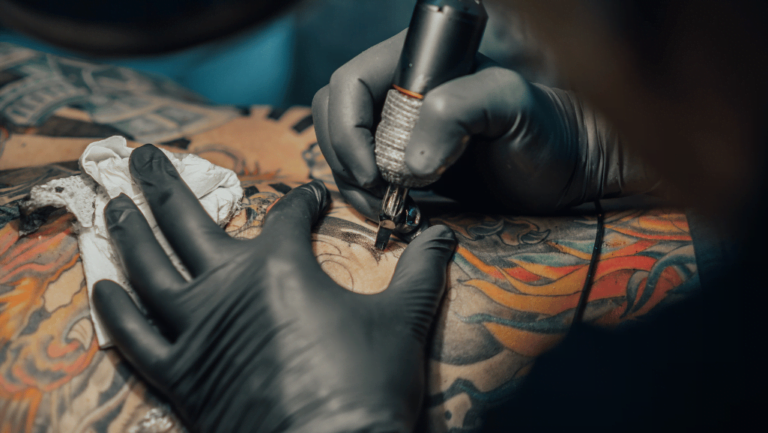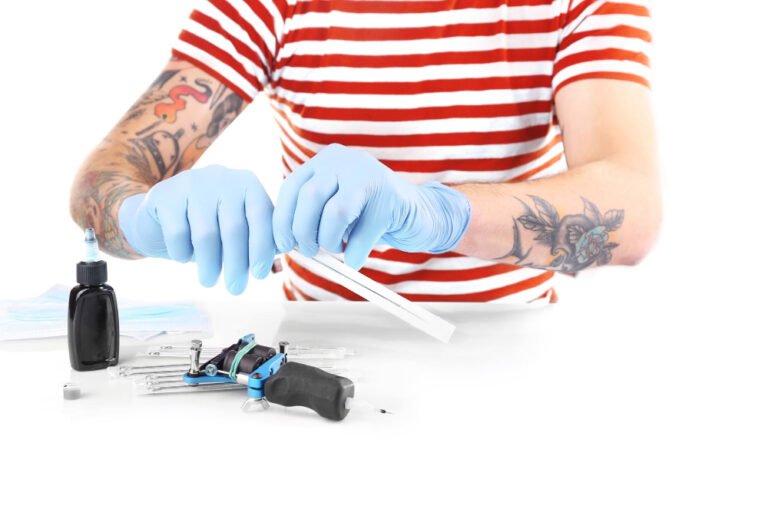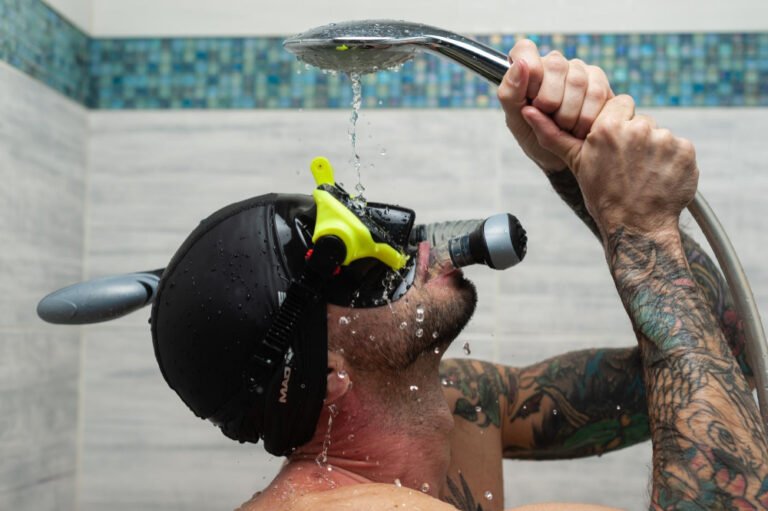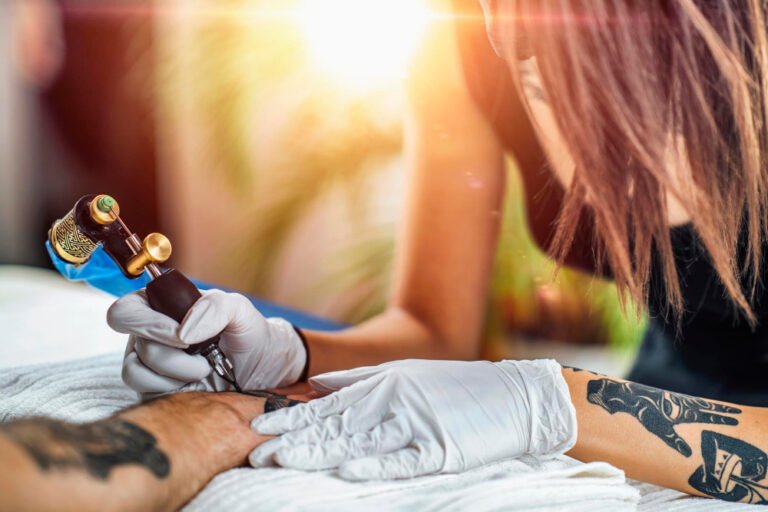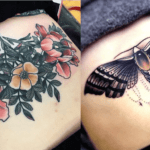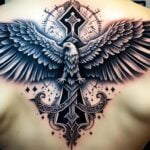The optimal duration for keeping a tattoo wrapped for optimal healing and aftercare is a crucial part of the tattoo healing process. It is important to follow the guidance provided by your tattoo artist to ensure proper care and prevent any negative consequences. Let’s explore the recommended timeframes for leaving a tattoo wrapped based on expert advice and best practices.
Tattoo Wrapping Instructions – The First 48 Hours
During the first 48 hours after getting a tattoo, proper care is essential to ensure optimal healing and minimize the risk of infection. Your tattoo artist will apply a bandage immediately after completing the tattoo, which should be left on for a specific period of time, typically between 3 and 24 hours. This initial bandage serves to protect the tattoo from outside contaminants while allowing the wound to breathe.
When the designated time has passed, it is time to remove the bandage and begin the cleaning process. Start by washing your hands thoroughly with warm water and antibacterial soap to minimize the risk of introducing bacteria to the freshly tattooed area.
Next, gently wash the tattooed area using mild antibacterial soap and lukewarm water. Avoid scrubbing or rubbing the tattoo, as this can cause irritation or damage. Rinse the area thoroughly to ensure all soap residue is removed.
After washing, gently pat the tattoo dry with a clean paper towel. Avoid using cloth towels or anything that may harbor bacteria. Allow the tattoo to air dry for a few minutes to ensure it is completely dry.
At this stage, some artists recommend re-wrapping the tattoo before bed, while others advise leaving it exposed to the air overnight. Follow your tattoo artist’s specific instructions regarding re-wrapping, as this can vary based on personal preference and the size and location of the tattoo.
Remember, the first 48 hours are crucial in the tattoo healing process. By following these tattoo wrapping instructions and adhering to your tattoo artist’s guidance, you can support proper healing and set the stage for a beautiful and vibrant tattoo.
Recommended Tattoo Wrapping Instructions – The First 48 Hours
| Tattoo Wrapping Instructions | Recommendation |
|---|---|
| Bandage Removal | Leave the initial bandage on for the specified duration instructed by your tattoo artist, usually between 3 and 24 hours. |
| Cleansing | Gently wash the tattooed area with mild antibacterial soap and lukewarm water, avoiding excessive scrubbing. |
| Drying | Pat the tattoo dry with a clean paper towel, ensuring it is completely dry before proceeding. |
| Re-wrapping | Depending on your artist’s recommendation, re-wrap the tattoo before bed or leave it exposed to the air overnight. |
How Long To Keep Your Tattoo Wrapped
The healing process of tattoos depends on various factors, such as the size, placement, and type of wrapping used. To ensure proper tattoo care, it is crucial to follow the recommended wrapping instructions and duration.
Medical-grade protective films like Saniderm or Dermshield are often preferred over cling wrap due to their superior healing properties. These films protect the tattoo from external contaminants while allowing it to breathe, promoting a faster healing process.
While each tattoo is unique, many artists suggest changing the wrap at least once every 24 hours during the first 1-3 days. This frequent change helps prevent fluid buildup and keeps the tattoo clean. It is important to monitor the wrapped tattoo for any signs of excess moisture or infection.
Proper tattoo care instructions also emphasize keeping the tattoo clean and moist. This ensures that the healing process is not hindered and helps maintain the tattoo’s vibrancy. Regular cleaning and moisturizing, as per the artist’s guidance, are key components of effective tattoo aftercare.
To summarize, the duration for keeping a tattoo wrapped varies depending on factors such as size, placement, and wrapping type. Changing the wrap once every 24 hours for the initial 1-3 days is widely recommended. Following the proper tattoo care instructions, including keeping the tattoo clean and moist, is essential for the healing process.
| Factors Affecting Tattoo Wrapping Duration | Recommended Duration for Wrapping |
|---|---|
| Tattoo size | 1-3 days with regular wrap changes |
| Tattoo placement | 1-3 days with regular wrap changes |
| Type of wrapping used | 1-3 days with medical-grade protective film |
Key Takeaways:
- The duration for keeping a tattoo wrapped varies based on tattoo size, placement, and wrapping type.
- Medical-grade protective films like Saniderm or Dermshield are preferred for optimal healing.
- Changing the wrap at least once every 24 hours during the first 1-3 days is recommended.
- Monitoring the wrapped tattoo for fluid buildup and keeping it clean are essential.
- Following proper tattoo care instructions ensures the best healing results.
The Next 24 Hours – Washing and Moisturizing
After the initial 48 hours, your tattoo may still be sore and appear swollen and red, similar to a sunburn. It’s important to remove the protective wrap and wash the tattoo using a gentle tattoo cleanser or mild antibacterial soap. Pat it dry with a fresh paper towel and start moisturizing the tattoo with fragrance-free lotion or a specific tattoo healing cream like Zensa Healing Cream or Aquaphor. Apply a thin layer of moisturizer and follow your tattoo artist’s after-care instructions for the frequency of washing and moisturizing.
Keeping your tattoo clean is essential during the tattoo healing stages. Washing your tattoo gently helps remove any excess ink, blood, or ointment, reducing the risk of infection and promoting proper healing. Use lukewarm water and a mild cleanser specifically formulated for tattoo care, avoiding harsh chemicals that can irritate the skin or fade the tattoo. Gently pat the tattoo dry with a clean paper towel or let it air dry to avoid rubbing or causing any damage to the area.
After carefully washing, moisturizing your tattoo is crucial for its healing process. Moisturizers help keep the skin hydrated, preventing excessive dryness and reducing the risk of scabbing or itching. Choose a fragrance-free lotion or a specialized tattoo healing cream recommended by your tattoo artist. Apply a thin layer of moisturizer to your tattoo, ensuring that it covers the entire area. Avoid applying too much lotion, as it may clog the pores or suffocate the tattoo.
Remember to follow your tattoo artist’s after-care instructions for the frequency of washing and moisturizing. They may recommend washing and moisturizing your tattoo 2-3 times a day during the first week and gradually reducing the frequency as the healing progresses. Adhering to these guidelines will help protect and maintain the integrity of your fresh tattoo.
The importance of washing and moisturizing:
- Washing your tattoo gently with a mild cleanser and patting it dry helps remove impurities and promote healing.
- Moisturizing your tattoo with a fragrance-free lotion or specialized tattoo healing cream keeps the skin hydrated and prevents excessive dryness.
- Follow your tattoo artist’s after-care instructions for the frequency of washing and moisturizing to ensure optimal healing.
| Benefits of Washing and Moisturizing | Why It Matters |
|---|---|
| Promotes healing | Proper washing and moisturizing help remove debris, reduce the risk of infection, and support skin regeneration. |
| Prevents scabbing and itching | Regular moisturizing prevents excessive dryness, reducing the chances of scabbing and itching. |
| Maintains tattoo vibrancy | Keeping your tattoo clean and moisturized helps preserve its colors and overall appearance over time. |
| Reduces the risk of complications | By following proper washing and moisturizing techniques, you minimize the chances of infection or other complications. |
Best Tattoo After-Care Practices
Proper tattoo care is essential for supporting the healing process of your tattoo, both internally and externally. By following the best after-care practices, you can ensure that your tattoo heals properly and maintains its vibrancy for years to come.
Cleanliness is Key
Keeping your tattoo clean is crucial to prevent infection and promote healing. Gently wash your tattoo with lukewarm water and a mild, fragrance-free soap. Avoid scrubbing or rubbing the tattoo too vigorously, as this can irritate the skin and delay the healing process. Pat the tattoo dry with a clean towel or let it air dry to avoid any unnecessary friction.
Regular Washing and Moisturizing
During the healing stages of your tattoo, it is important to wash the tattoo 2-3 times a day, especially after any activities that may cause sweating or expose the tattoo to dirt or bacteria. Use a gentle soap and lukewarm water to wash away any impurities, then pat it dry with a clean towel. After washing, apply a thin layer of tattoo-specific moisturizer or an unscented lotion to keep the skin hydrated and prevent excessive drying.
Protecting Your Tattoo
While your tattoo is healing, it’s crucial to protect it from any potential damage. Avoid scratching or picking at the scabs or peeling skin, as this can lead to scarring or color loss. Be mindful of your clothing choices, opting for loose-fitting garments made of breathable fabrics to minimize friction and irritation. Additionally, avoid exposing your tattoo to excessive sun, chlorine, or saltwater during the healing process, as these can fade and damage the tattoo.
| Tattoo Healing Stages | Proper Tattoo Care |
|---|---|
| Stage 1: The Fresh Tattoo | – Keep the tattoo wrapped for 2-3 hours after the tattoo session. – Wash gently with mild soap and lukewarm water after removing the wrap. – Apply a thin layer of moisturizer or tattoo-specific aftercare product. – Avoid direct sunlight and excessive sweating. – Do not submerge the tattoo in water. |
| Stage 2: The Healing Process | – Wash the tattoo 2-3 times a day with a gentle soap and lukewarm water. – Moisturize the tattoo regularly with an unscented lotion or tattoo-specific moisturizer. – Avoid scratching or picking at the scabs. – Wear loose-fitting, breathable clothing. – Protect the tattoo from sun exposure and harsh chemicals. |
| Stage 3: Fully Healed Tattoo | – Continue to keep the tattoo clean and moisturized. – Apply sunscreen with a high SPF to protect the tattoo from fading. – Avoid excessive rubbing, scratching, or exposure to harsh chemicals. – Keep the skin hydrated by drinking plenty of water. – Follow your tattoo artist’s aftercare instructions for any specific recommendations. |
Supporting Healing from Within
In addition to external care, supporting your tattoo’s healing process starts from within. Ensure you maintain a healthy diet consisting of fruits, vegetables, and lean proteins to provide the essential nutrients needed for skin repair. Incorporate vitamin C-rich foods like citrus fruits and berries, as vitamin C aids in collagen production. Staying hydrated by drinking plenty of water throughout the day also helps promote healthy skin and quick healing.
Remember, every tattoo is unique, and the healing process may vary from person to person. It’s important to follow the after-care instructions provided by your tattoo artist and consult them if you have any concerns or questions.
By following these best tattoo after-care practices, you can ensure the proper healing and long-term vibrancy of your tattoo. Take the time to care for your tattoo during the healing stages, and enjoy the beautiful art that you’ve chosen to adorn your body.
What To Avoid During The First 48 Hours
Proper tattoo aftercare plays a crucial role in ensuring a smooth healing process and maintaining the longevity of your tattoo. To promote optimal healing and avoid complications, it is essential to follow certain precautions during the first 48 hours after getting inked.
Avoid Excessive Moisture
During the initial 48-hour period, it is crucial to prevent excessive moisture on your fresh tattoo. Moisture can create a breeding ground for bacteria, leading to potential infections, scarring, and even premature fading of the tattoo. Here’s what you should avoid:
- Avoid engaging in activities that may cause excessive sweating, as sweat can contain bacteria that can negatively impact the healing process.
- Avoid exposing your tattoo to rain or submerging it in water, such as swimming pools, hot tubs, or baths. Water can introduce bacteria to the tattooed area, disrupting the healing process and increasing the risk of infection.
Steer Clear of Harsh Soaps and Skincare Products
Using harsh soaps or skincare products containing fragrances or chemicals can irritate your tattooed skin during the early stages of healing. Stick to gentle, fragrance-free antibacterial soaps or specific tattoo cleansers recommended by your tattoo artist.
Avoid Direct Sunlight and Tight-Fitting Clothes
Direct sunlight can cause your tattoo to fade and may also increase the risk of inflammation. So, keep your tattoo away from direct sunlight, especially during the initial healing stage. Additionally, avoid wearing tight-fitting clothes that rub against your tattoo, as the friction can potentially irritate the skin and disrupt the healing process.
Avoid Alcohol Consumption
Alcohol consumption can thin the blood and increase the risk of excess bleeding during and after getting a tattoo. To minimize the chances of complications and promote optimal healing, it is advisable to avoid consuming alcohol for a minimum of 48-72 hours before and after getting inked.
By following these aftercare instructions and avoiding these common pitfalls, you can ensure that your tattoo heals properly and retains its vibrancy for years to come.
Conclusion
Proper aftercare is crucial for the healing and long-term appearance of your tattoo. By following the recommended care instructions provided by your tattoo artist, including the optimal duration for keeping the tattoo wrapped, washing, moisturizing, and avoiding certain activities during the healing stages, you can ensure that your tattoo heals properly and maintains its vibrancy.
Each individual’s healing process may vary slightly, so it’s important to consult with your tattoo artist if you have any concerns or questions. They are the best resource to provide personalized advice based on your specific tattoo. Embrace the healing journey and enjoy your new tattoo!
Remember, tattoo aftercare is an ongoing process. It’s important to continue practicing proper tattoo care even after your tattoo has fully healed. This includes protecting your tattoo from excessive sun exposure, using sunscreen, moisturizing regularly, and avoiding abrasive activities that may damage the tattooed area.
FAQ
How long should I leave my tattoo wrapped?
What should I do during the first 48 hours after getting a tattoo?
How long should I keep my tattoo wrapped?
What should I do during the next 24 hours after removing the wrap?
What are the best after-care practices for tattoos?
What should I avoid during the first 48 hours after getting a tattoo?
Forhad
Forhad's writing is not just about the artistry of tattoos or the latest trends in the industry; it's an exploration of the deep-rooted connections people have with their tattoos, reflecting personal narratives, cultural histories, and moments of transformation. Through a mix of in-depth features, personal narratives, and insightful analyses, he sheds light on the multifaceted nature of tattooing, revealing the emotional and cultural layers that lie beneath the surface.
